.webp)
As the construction industry continues to recover from the disruptions of the past few years, the labor shortage remains a pressing challenge. The Associated General Contractors of America (AGC) and Arcoro's recent workforce survey reveals some troubling statistics: 94% of firms report having openings for craft workers, while 85% have openings for salaried workers. However, filling these positions is an uphill battle—94% of firms with craft worker openings say they’re hard to fill, and 92% of firms seeking salaried workers face similar difficulties.
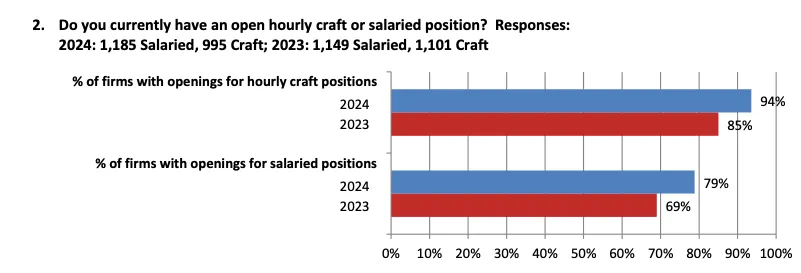

The shortage of skilled workers is exacerbating project delays, driving up costs, and threatening the viability of construction projects across the country. From mechanics and cement masons to superintendents and project managers, the construction industry is scrambling to find qualified personnel who can keep up with growing demand. But as these survey results show, the solution is not as simple as just hiring more people.
One of the most critical issues facing the construction industry today is the widening skills gap. A staggering 62% of firms report that candidates lack the essential skills or certifications needed to work in the industry. Craft workers such as mechanics, masons, plumbers, and electricians are particularly hard to come by, with over 80% of firms employing these roles saying they are difficult to fill. The shortage is equally dire for salaried positions, where 83% of firms seeking superintendents, and 81% of firms seeking project managers and supervisors, report difficulty filling these critical roles.
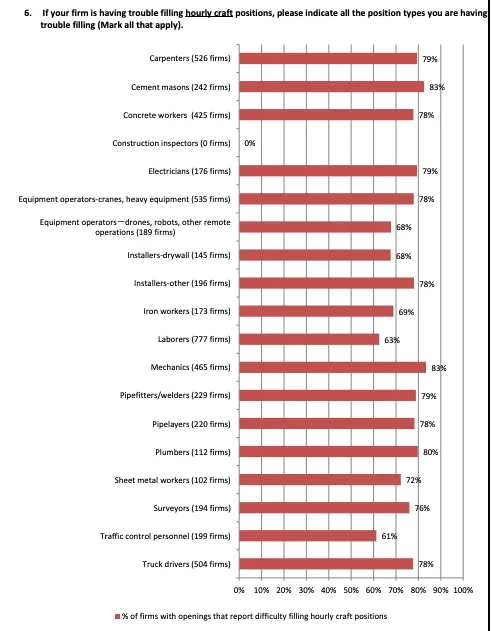
This shortage of qualified labor is having a tangible impact on projects. Over 54% of firms report project delays due to labor shortages—either within their own workforce or among subcontractors. Additionally, many firms are seeing projects canceled, postponed, or scaled back due to the inability to staff them. These challenges are compounded by increasing labor costs, creating a perfect storm for contractors and construction owners alike.
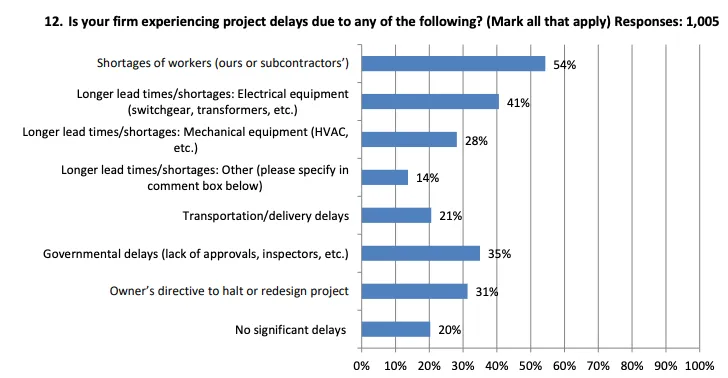
Furthermore, nearly half of all new hires either fail to show up or quit shortly after starting, adding to the industry’s ongoing struggles. Forty-three percent of respondents report that potential employees lack the necessary credentials such as driver’s licenses, work permits, or clean background checks. In some cases, drug testing has disqualified candidates, with the number of firms reporting failed drug tests increasing to 37%, up from 33% in the previous year.

The inability to fill essential positions is having a domino effect on construction timelines. According to the survey, 80% of firms have experienced at least one project that has been canceled, scaled back, or postponed in the past year. This disruption can be attributed to a combination of labor shortages, rising material costs, and difficulties in securing financing. Supply chain delays—particularly for essential electrical and mechanical equipment—are also playing a role, with over 40% of firms citing lead times for critical equipment as a source of project delays.
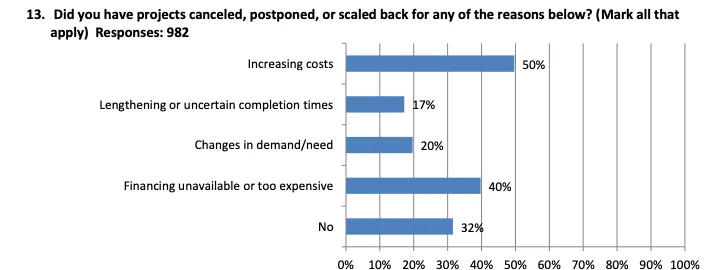
Even with fewer material shortages compared to 2020-2022, construction firms are still feeling the pinch. Long lead times for electrical equipment like transformers and HVAC systems are causing delays for about half of the firms surveyed. Additionally, some projects are delayed due to a lack of government approvals or inspectors, as well as changes in the owner’s project directives.
While the challenges are substantial, construction firms are taking steps to adapt. Recognizing that a long-term labor shortage is inevitable, 42% of firms are increasing their spending on training and professional development. The largest firms, those with more than $500 million in revenue, are leading the charge, with 54% investing in training programs. Smaller firms, with annual revenue of $50 million or less, are also taking action, with 34% reporting increased training investments.
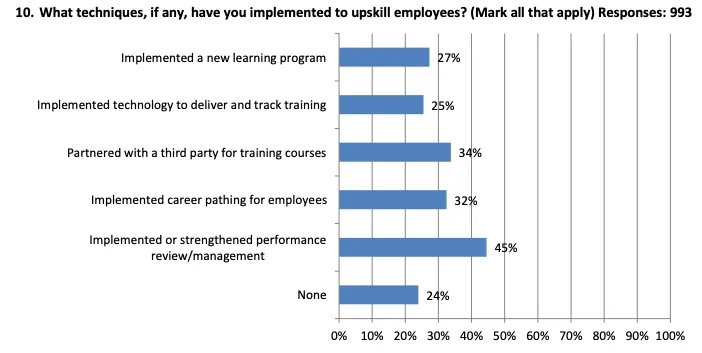
In addition to training, technology is becoming an essential tool for construction firms. Digital learning platforms, video conferencing, and even augmented and virtual reality training devices are being implemented to upskill workers and streamline the learning process. The use of performance management tools, career pathing, and third-party training partnerships are also helping firms retain and develop their existing workforce.
At the same time, firms are rethinking how they approach recruitment. More than half of the respondents have adopted digital strategies, such as social media and targeted digital advertising, to connect with younger applicants. Many are engaging with educational institutions to build career-building programs aimed at addressing the workforce gap over the long term. However, despite these efforts, only 7% of firms are taking advantage of employment-based visa programs like H-1B or H-2B, suggesting that immigration reform could be an untapped avenue for addressing labor shortages.
Despite these significant challenges, the construction industry remains resilient. An encouraging 73% of firms expect to add employees in the next 12 months, up from 69% a year ago. Only 8% of firms anticipate reducing headcount, while 19% expect no net change. This optimism is not evenly distributed across the country—firms in the Northeast are the most optimistic, with 83% expecting to expand, followed by the South (76%), West (70%), and Midwest (69%).
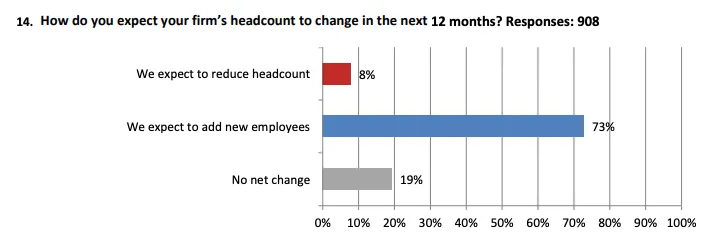
However, even as firms plan for expansion, many are bracing for continued delays and disruptions. Half of the respondents cite rising costs as a reason for project cancellations or deferrals, while 40% report that financing is either unavailable or too expensive. Meanwhile, about 20% of firms note changes in demand or the needs of their clients as driving factors behind project changes.
From the perspective of ConstructionOwners.com, the current workforce crisis represents the most significant bottleneck threatening project delivery and profitability. As labor shortages continue to drive up costs and delay timelines, construction owners must rethink their approach to workforce management. Increasing investments in training and leveraging technology to manage projects more efficiently is a start, but the industry needs to focus on long-term solutions, including more proactive engagement with career-building programs and workforce development initiatives.
In this environment, collaboration across the supply chain is key. Construction owners, contractors, and subcontractors must work together to build a more resilient workforce capable of meeting the increasing demands of the industry. By fostering partnerships with educational institutions, investing in emerging technologies, and creating more pathways for skilled workers, the construction industry can better position itself for sustainable growth and success.